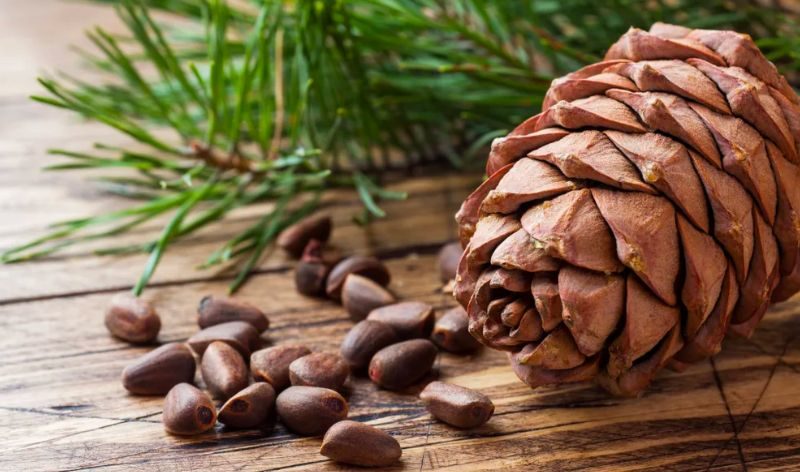What are the environmental benefits of growing a Christmas tree from seed?
Reduced carbon footprint due to not buying cut trees that are often shipped from other states or countries
Firstly, it allows for the cultivation of trees from the earliest stages, ensuring healthier and more resilient specimens. These young trees absorb a significant amount of carbon dioxide, helping to mitigate greenhouse gas emissions and combat climate change.

Read More: best christmas tree black friday deal at 2023
Contribution to local ecosystems and wildlife habitats
Additionally, these Christmas tree farms can provide habitats for wildlife and support local ecosystems, contributing to biodiversity conservation.
Which types of Christmas trees can be grown from seed?
Firs, spruces, pines, cedars, and cypresses
Firs, spruces, pines, cedars, and cypresses are all traditional Christmas tree varieties that can be successfully grown from seed. These trees can be used repeatedly for many years, reducing waste and promoting a more eco-friendly Christmas tradition.

How do you start a Christmas tree from seed?
Soaking and scarification of seeds to improve germination rates
Soaking and scarification are effective methods to enhance seed germination rates. Soaking seeds in water helps to soften the hard seed coat, promoting quicker and more consistent sprouting. Scarification, or physically breaking the seed coat, can also stimulate germination by allowing water and oxygen to reach the embryo inside.

Pre-treatment of forest and landscape seeds with cold stratification
Pre-treatment of forest and landscape seeds, such as cold stratification, can significantly improve germination rates. Cold stratification involves exposing seeds to a period of cold and moist conditions, mimicking winter conditions, which helps break dormancy.
Sowing seeds in suitable soil, either in containers or directly in the ground
Sowing seeds in suitable soil is a vital step in successful plant growth. It can be done either in containers or directly in the ground, depending on the plant species and gardener’s preference.
The soil should be well-draining and rich in organic matter to provide necessary nutrients. Proper spacing is also crucial to allow for optimal growth and prevent overcrowding of plants.
What are the important steps when sowing Christmas tree seeds?
Selecting a suitable site with appropriate sunlight, drainage, and soil conditions
Choosing the right location for planting is key to successful growth. The area should have suitable lighting, with the right balance of sun and shade as per the plant’s needs. Drainage is equally important to prevent waterlogging and promote healthy root systems. Lastly, the soil conditions should be considered – it should be nutrient-rich, with a pH level compatible with the plant species. These factors combined will ensure optimal plant health and growth.

Preparing the ground for planting, which may include clearing weeds and debris
It may include removing weeds and debris to prevent competition for nutrients and to create a clean slate for your plants. The process also often involves turning and loosening the soil to improve aeration and facilitate easier root penetration. Adding compost or other organic matter can further enrich the soil, providing a nutrient-dense environment for plant growth.
Sowing seeds at an appropriate depth, spacing, and density
The depth should be suitable for the type of seed, usually two to three times its diameter. Spacing between seeds is crucial to prevent overcrowding and allow each plant enough room to grow and access nutrients. Density refers to the number of seeds per unit area, which should be maintained to ensure healthy competition and avoid wastage of seeds.
Applying mulch and irrigation to promote seedling growth and survival
Mulching helps retain soil moisture, suppress weeds, and regulate soil temperature, creating an ideal environment for the young plants. Meanwhile, proper irrigation provides the necessary water for seed germination and growth. It’s essential to balance watering, as both overwatering and underwatering can adversely affect the plants.
How do you care for Christmas tree seedlings and young trees?
Fertilizing with appropriate nutrients and soil amendments, depending on soil conditions and tree species
Growing Christmas trees from seed requires careful steps to ensure healthy growth and a bountiful holiday season. It’s essential to provide the right nutrients and soil amendments tailored to the specific soil conditions and tree species. Fertilization helps these young trees thrive, promoting strong growth and vibrant foliage.

Pruning to remove damaged or competing branches and to shape the tree for optimal growth
Pruning is a crucial practice in growing Christmas trees. It involves removing damaged or competing branches, which improves the tree’s appearance and fosters optimal growth. By shaping the tree into the desired form, it ensures that it meets the aesthetic preferences of those who will decorate it.
Controlling weeds, pests, diseases, and other potential threats to tree health
Taking care of your Christmas tree involves attentively managing unwanted plants, bugs, illnesses, and other potential hazards that could harm the tree’s health. By implementing pest control methods, strategies to prevent diseases, and practices to manage weeds, you can ensure that your trees remain strong and free from pests as they grow.

Hi, my name is Phillip K. Weddle and I am the CEO of christmastreeblackfriday. I was born on May 18, 1966, and I currently reside at 2705 Bassel Street in Harahan, LA 70123. Being a Taurus, I am someone who is grounded, dependable, and enjoys the finer things in life. Before becoming the CEO, I worked as a Mold and Model maker at Robert Hall. However, my true passion lies in gardening, decoration, and DIY stuff, which is why I started this website. I wanted to bring together my love for the holidays and my enthusiasm for decoration and offer the best deals on Christmas trees at Black Friday.

